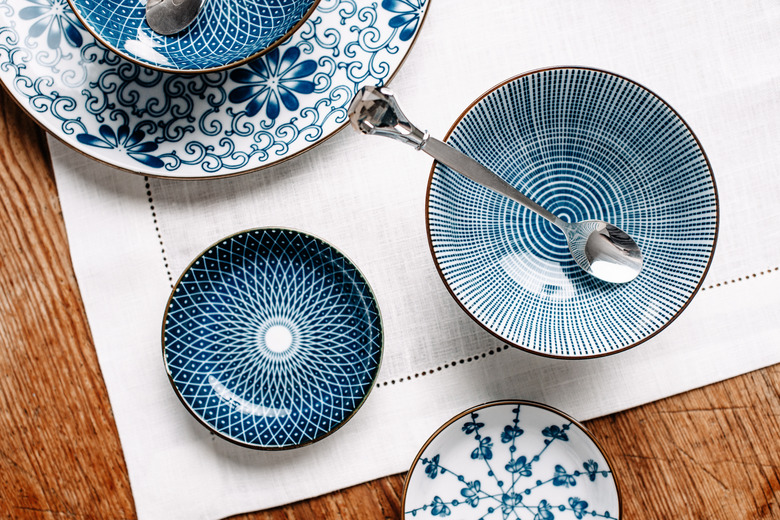What Effect Do Acids Have On Porcelain?
We may receive a commission on purchases made from links.
If you have porcelain in your bathroom, you may be wondering about the effect acids have on porcelain. Keeping a porcelain sink or bathtub or a set of porcelain tiles clean is key to making your bathroom look its best. Unlike more-durable plastic bathroom components, porcelain may be a little more difficult to clean. Porcelain is a more delicate material that can be damaged by harsh cleaning products.
Lifting more stubborn stains from porcelain surfaces can therefore be somewhat challenging. However, there are ways to effectively clean porcelain without damaging it in the long run. Knowing which products to use and how to best use them is key to safely cleaning your porcelain while achieving the desired results. Using acids on porcelain is a controversial cleaning method and should always be done with extreme caution.
Tip
Some acids can be used to clean porcelain. If used incorrectly, though, acids may damage the surface, so carefully follow directions and choose the right products for the job.
Removing Stains From Porcelain
Removing Stains From Porcelain
Over time, like any surface, porcelain is prone to becoming discolored and looking old and dingy. Because a porcelain tub or tiles can be a beautiful feature in a bathroom, keeping the material looking its best is important.
Removing stains from porcelain surfaces can be tricky, though. Overly harsh cleaning products can cause discoloration or can even wear away the smooth surface of your porcelain. One way to lift stains from a porcelain surface is by cleaning with an acid product. Lemon juice and white vinegar are sometimes cited as porcelain stain removers alongside oxalic acid products such as Bar Keepers Friend. While these sorts of products can be very effective, they must be used carefully to avoid causing surface damage and discoloration.
Using Acids on Porcelain
Using Acids on Porcelain
Different strengths of acids can have different effects on your porcelain. You want to try to find the sweet spot where the acid cleaner is effective at lifting stains but not so strong that it's also going to damage the surface of your porcelain. Starting with weaker acids and working your way up can help you effectively use acids to clean without ruining your tub or tile.
Different porcelain coatings can also impact how acids affect the surface. Some tiles have a thicker and more durable coating than an antique porcelain tub, for example. Examining your surface thoroughly and starting slowly can help you lift any stains and discolorations from a porcelain surface without causing further damage.
You should always first apply a cleaning product to a difficult-to-see tile or inconspicuous area of the tub or sink to make sure it doesn't cause unsightly damage to the surface. If you choose to use an acid-based product to clean your porcelain, wear gloves to protect your skin as well as goggles to shield your eyes.
One of the main ways to reduce damage to porcelain when cleaning with acid is by limiting exposure time. The longer an acidic product sits on top of a porcelain surface, the more potential it has to erode and weaken it. If you use an acid-based cleaning product on your porcelain, thoroughly rinse the surface after you're done to prevent any lingering acid from continuing to erode the surface.
It's also important to look for alternatives to acidic cleaning products for your day-to-day tile maintenance. While using acids on porcelain can help with severe staining, regular porcelain cleaning should be kept as gentle as possible to prevent damage from occurring over time.
Alternatives to Acids
Alternatives to Acids
To keep your porcelain clean and free of stains, regular and gentle cleaning is key. A mild liquid dish soap or a tile cleaner can be ideal for porcelain maintenance.
To remove stains without reaching for an acidic cleaning product, you can also create a poultice from water and baking soda. Mix the two to create a thick paste and then apply it to the stain and allow it to dry. Once the poultice has dried, rinse the area thoroughly.
Using bleach (for white porcelain) or hydrogen peroxide-based cleaners (for different colors) can also be an effective method of lifting stains. These products are alkaline rather than acidic, and although they are harsh, they may be less potentially damaging to porcelain surfaces. They should still be used with caution, however, and you should take adequate safety measures like wearing gloves and ventilating the room.
